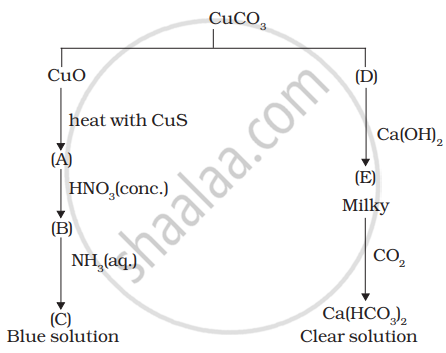Advertisements
Advertisements
प्रश्न
While filling up of electrons in the atomic orbitals, the 4s orbital is filled before the 3d orbital but reverse happens during the ionisation of the atom. Explain why?
उत्तर
Electrons are filled to the n + l rule. If an orbital has lower n + l value, then the electron will enter that orbital.
For 3d, n + l = 3 + 2 = 5
4s, n + l = 4 + 0 = 4
So, the electron will first enter 4s and then 3d while filling. But, 4s electrons are held loose by the nucleus and are outside of 3d, so removing a 4s electron becomes easier than removing a 3d electron.
APPEARS IN
संबंधित प्रश्न
Which metal in the first transition series (3d series) exhibits + 1 oxidation state most frequently and why?
Account for the following:
Mn shows the highest oxidation state of +7 with oxygen but with fluorine, it shows oxidation state of +4.
In lake test for Al3+ ions, there is the formation of coloured ‘floating lake’. It is due to ______.
Read the passage given below and answer the following question:
The transition metals when exposed to oxygen at low and intermediate temperatures form thin, protective oxide films of up to some thousands of Angstroms in thickness. Transition metal oxides lie between the extremes of ionic and covalent binary compounds formed by elements from the left or right side of the periodic table. They range from metallic to semiconducting and deviate by both large and small degrees from stoichiometry. Since electron bonding levels are involved, the cations exist in various valence states and hence give rise to a large number of oxides. The crystal structures are often classified by considering a cubic or hexagonal close-packed lattice of one set of ions with the other set of ions filling the octahedral or tetrahedral interstices. The actual oxide structures, however, generally show departures from such regular arrays due in part to distortions caused by packing of ions of different size and to ligand field effects. These distortions depend not only on the number of d-electrons but also on the valence and the position of the transition metal in a period or group.
In the following questions, a statement of assertion followed by a statement of reason is given. Choose the correct answer out of the following choices on the basis of the above passage.
Assertion: Cations of transition elements occur in various valence states.
Reason: Large number of oxides of transition elements are possible.
Match the solutions given in Column I and the colours given in Column II.
| Column I (Aqueous solution of salt) |
Column II (Colour) |
| (i) \[\ce{FeSO2.7H2O}\] | (a) Green |
| (ii) \[\ce{NiCl2.4H2O}\] | (b) Light pink |
| (iii) \[\ce{MnCl2.4H2O}\] | (c) Blue |
| (iv) \[\ce{CoC12,6H2O}\] | (d) Pale green |
| (v) \[\ce{Cu2 Cl2}\] | (e) Pink |
| (f) Colourless |
Identify A to E and also explain the reactions involved.

Sodium this sulphate is used in photography because of its:-
Match List - I with List - II
| List - I | List - II | ||
| (a) | \[\ce{[Fe(CN)6]^3-}\] | (i) | 5.92 BM |
| (b) | \[\ce{[Fe(H2O)6]^3+}\] | (ii) | 0 BM |
| (c) | \[\ce{[Fe(CN)6]^4-}\] | (iii) | 4.90 BM |
| (d) | \[\ce{[Fe(H2O)6]^2+}\] | (iv) | 1.73 BM |
Choose the correct answer from the options given below.
The number of terminal oxygen atoms present in the product B obtained from the following reactions is:
\[\ce{FeCr2O4 + Na2CO3 + O2 -> A + Fe2O3 + CO2}\]
\[\ce{A + H^+ -> B + H2O + Na^+}\]
The disproportionation of \[\ce{MnO^{2-}_4}\] in acidic medium resulted in the formation of two manganese compounds A and B. If the oxidation state of Mn in B is smaller than that of A, then the spin-only magnetic moment (µ) value of B in BM is ______. (Nearest integer)
